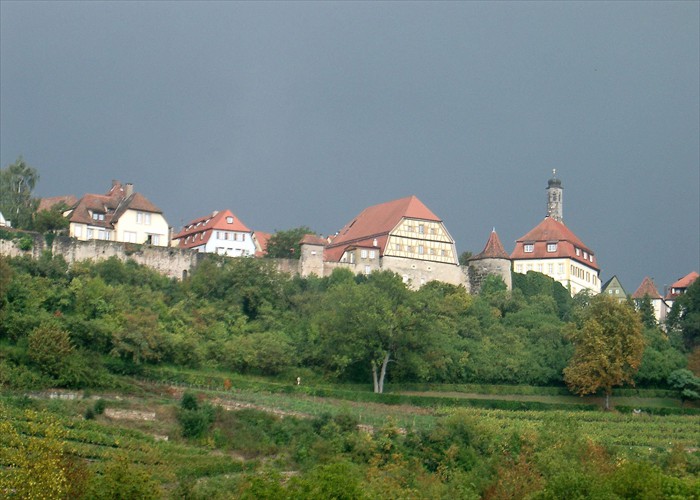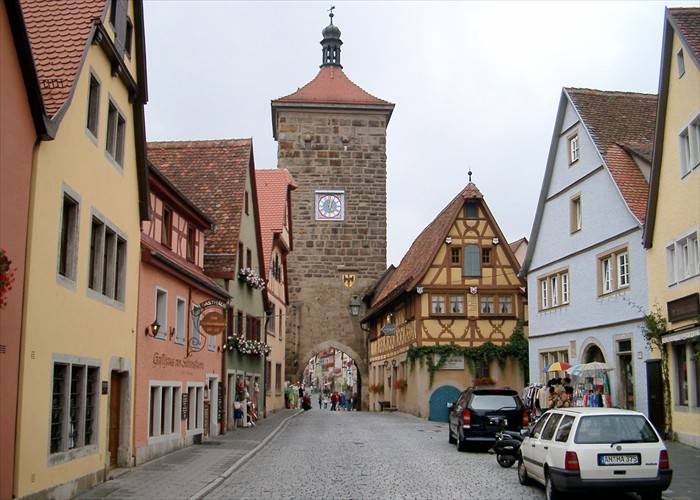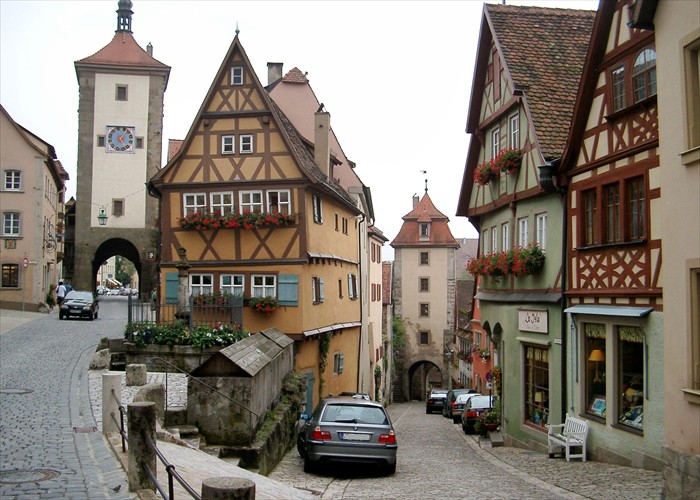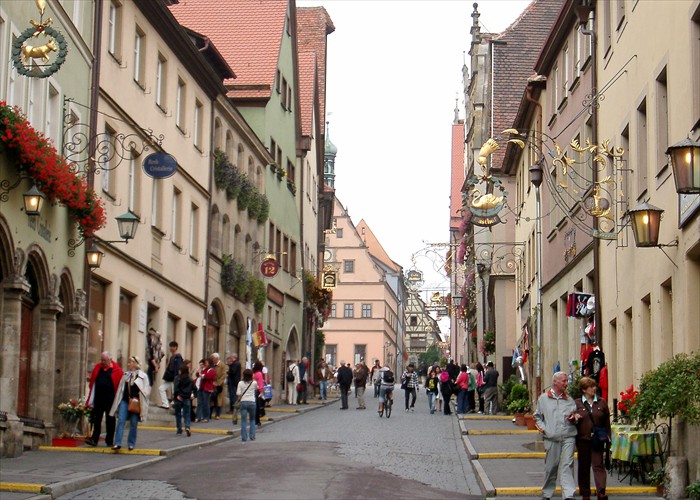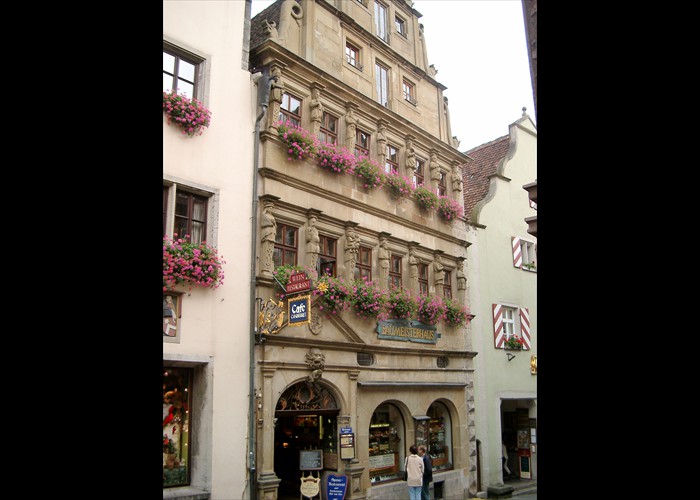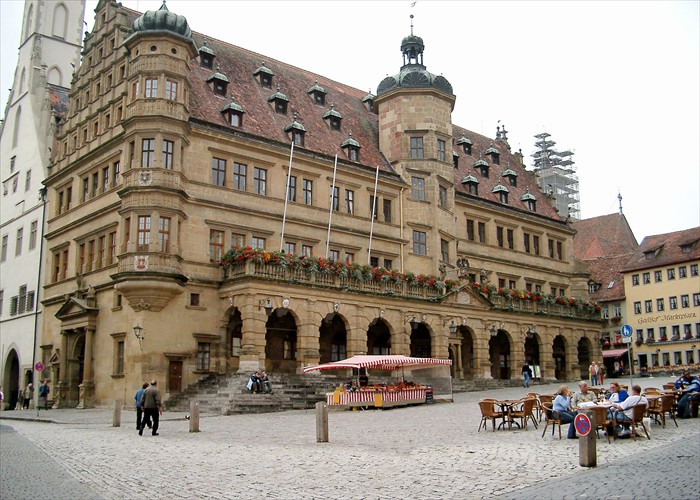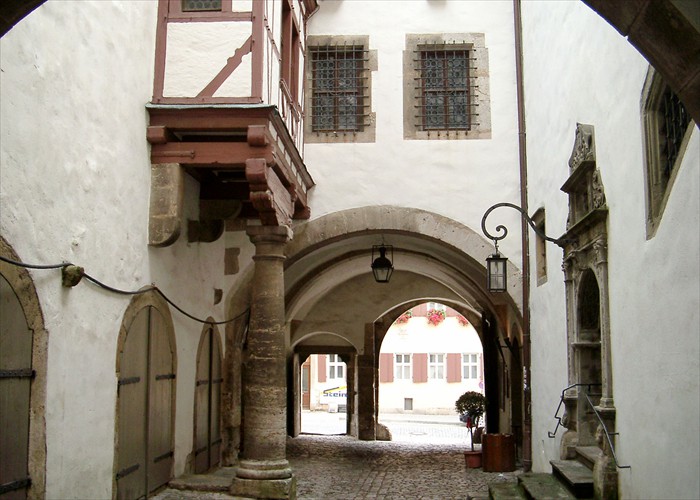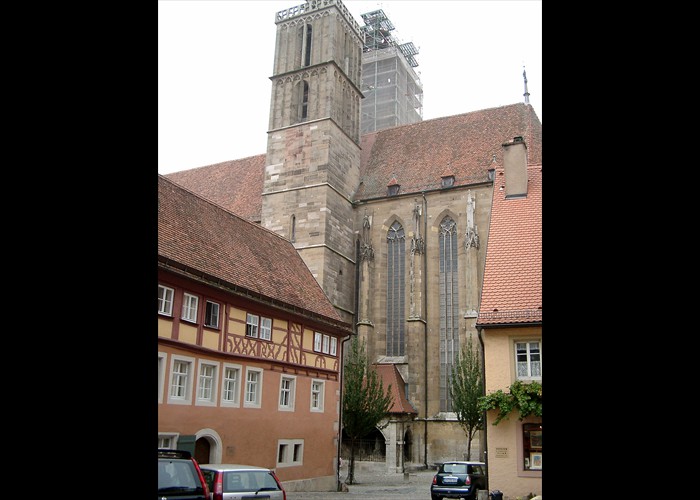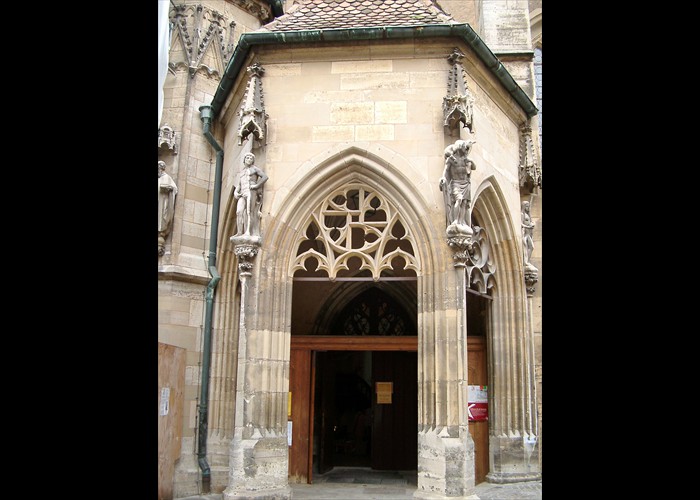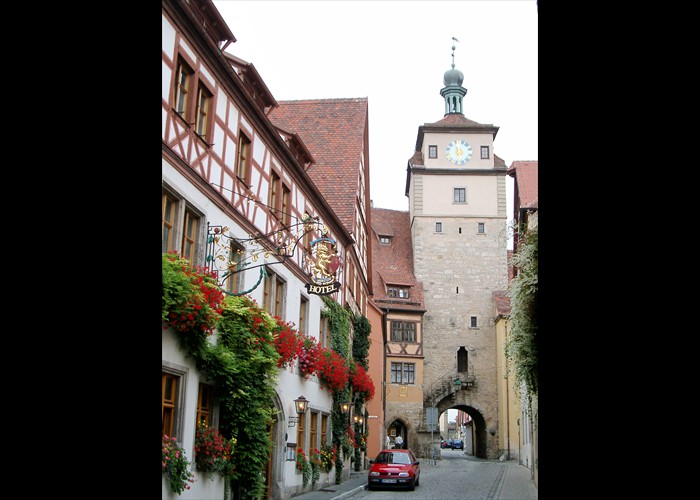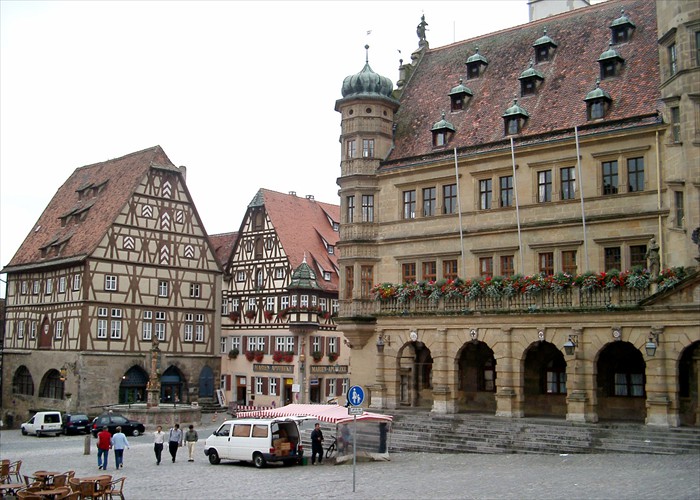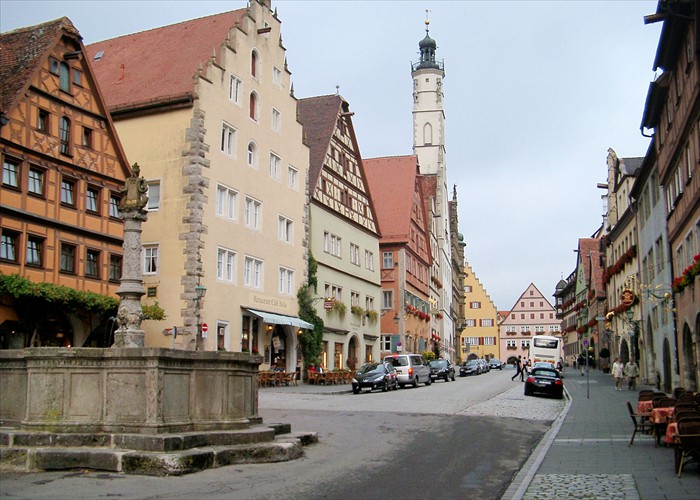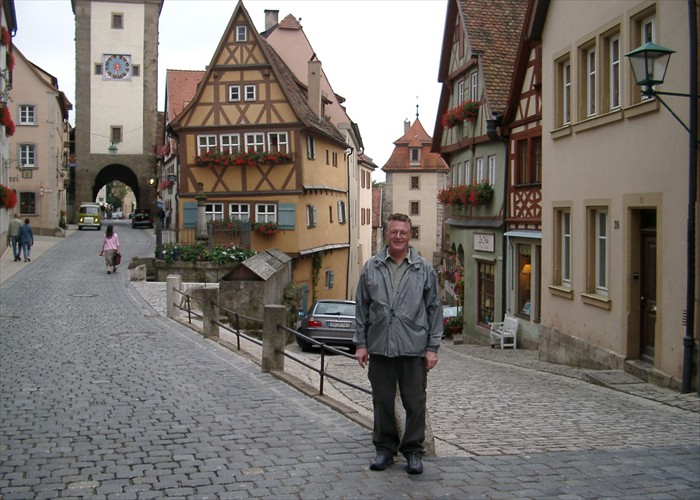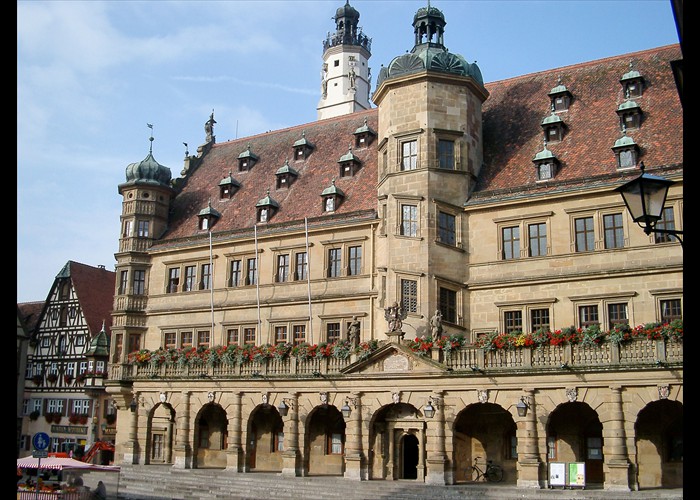From Ochsenfurt, the "Franconian-Swabian Way of St. James" leads along the Graubahn cycle path, an abandoned railway track. The rails are gone and the path is a sandy track that winds its way up the mountain at a leisurely incline. It goes uphill for a very long time. I overtake two cyclists. When I ask them "where from - where to", it turns out that they have already been on the road for three weeks and were in Hamburg with their bikes. My Leipzig trip is nothing compared to that.
This is the beginning of the
Graubahn Radweg (Graubahn Cycle path)
near Ochsenfurt. The Way of St. James also runs here. See the shell sign on the post of the road sign.
Soon Tückelhausen greets you with its monastery.
Abandoned railway station Graukönigshofen. Instead of a train, my touring bike is now there.
At Gelchsheim, the Gaubahn cycle path crosses a road with heavy cross-traffic.
The Way of St. James leads from Gelchsheim via Hemmersheim, Gallhofen to Uffenheim and from there southwards via Custenlohr, Mörlbach, Steinsfeld to Rothenburg.
But I stay on the Graubahn cycle path and cycle via Creglingen into the Tauber valley to the Tauber valley cycle path, first to the pass at Burgerroth.
Kunigundenkapelle (Kunigunden Chapel)
At the top of the pass, I pay a visit to the Kunigunden Chapel (near Buch).
Kunigunde is the wife of Emperor Henry II.
The chapel is a significant late Romanesque building and was probably built around 1230 (during the heyday of the Hohenstaufer dynasty in 1138 -1250).
The story of the foundation is once again entwined with a veil legend. Cunegonde let three veils flutter in the wind to found churches wherever the wind blew them.....
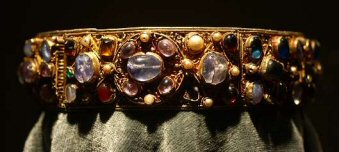
The said Kunigunde is a daughter of Count Siegfried I of Luxembourg. She was born in 975 and married Duke Henry IV of Bavaria, later Emperor HEINRICH II, around the year 1000. She died in 1033 in the Benedictine monastery of Kaufungen, which she founded and entered as a widow in 1025. The imperial couple is buried in Bamberg Cathedral.
She was canonised on 29.3.1200.
Her crown (left picture) can be seen in the treasury of the former royal residence in Munich. In the Diocesan Museum in Bamberg there are several of her coats and a belt she made herself.
At Creglingen I cross the Tauber.
Creglingen
Unfortunately, out of ignorance, I drive past the world-famous Herrgotttskirche with the Marian altar by Tilman Riemenschneider. It would only have been about one extra kilometre - south into the Herrgottstal.
The Tauber Valley Cycle Route
The cycle path is very hilly. It goes up and down again and again. The weather gets a bit gloomier, the sky darkens, it starts to drizzle. I change to rain gear as quickly as possible. The new poncho is tried out and proves itself quite well. But now it is raining quite intensively. Fortunately, the Romanesque church of Detwang with the Riemenschneider altar, which I wanted to visit anyway, is already there. I stay in the church for over an hour as the only visitor and have a good look at the Riemenschneider carvings. I also chat a lot and for a long time with the nice lady at the ticket office.

The thousand-year-old St. Peter and Paul's Church in Detwang.
It houses the Holy Cross Altar by Tilman Riemenschneider. It was originally created in 1508 by the Würzburg master for St Michael's Chapel in Rothenburg. From there it was brought to Detwang in 1653 because of the space it needed.
The left wing shows Jesus in the Garden of Gethsemane, the right wing the Resurrection. In the middle the crucified. Click on him for an enlarged view!
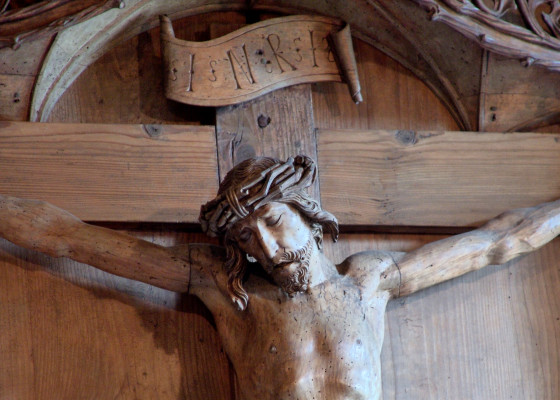
Rothenburg ob der Tauber
As the rain subsides, I continue my journey. It is only a short distance to Rothenburg ob der Tauber. Finally it stops raining and Rothenburg is in front of me, high up on the cliff, illuminated by the evening sun and behind it a pitch-black sky. The climb is arduous.
Through the Spitaltor I get behind the fortified city walls and look for a place to stay. I quickly find it. I stay in a medieval house, the Gasthof zum Spitaltor. I put my bike in a weatherproof locker and set off on my first tour of the city. Hundreds of tourists are on their way. There are endless photo opportunities. Especially the Japanese tourists shoot out of all their photo ears.
For the evening meal in my accommodation, I order, on recommendation, the last meal ? excellent. At 21:30, the night watchman's tour of the town begins at the market square. An actor dressed as a night watchman with a spit and a lantern explains in witty words what life was like in the Middle Ages and tells the story of the town in passing.
Impressions of Rothenburg ob der Tauber
Across the market square, past the Renaissance town hall, I arrive at St James' Church and stand in front of the Gothic altar with the images of the chicken miracle. The legend of St James is also depicted drastically. The entry of the body of James into Santiago is interesting. It lies on an ox cart. His head, which had been cut off in Jerusalem, lies slightly to one side. But you have to look closely, otherwise you think he is holding his head at an angle. Since the artist (Friedrich Herlin) did not know what Santiago looked like, he painted Rothenburg as it looked in the 15th century. An interesting contemporary document.
In the church I also receive the pilgrim's stamp.
The first church building was started in 1311. The Gothic St. James Church was consecrated in 1485.
The Holy Blood Altar, a masterpiece by Tilman Riemenschneider, stands in the west gallery. The name comes from the relic, a drop of Christ's blood, which arrived in Rothenburg at the end of the Crusades. The altar (detail) shows the Last Supper.
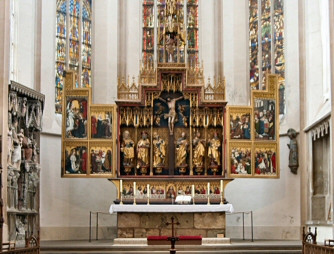
The main altar in the St. James church is the twelve Apostles altar by Friedrich Herlin, 1466.
When open, a crucifixion group with John and Mary can be seen in the centre; next to them are two saints - James the Elder and Elizabeth on the left, Leonhard and Anthony on the right. When closed, there are eight panels with the legend of James, five of which depict the 'hanged man unhanged' legend (the miracle of the gallows or the chicken).
More about the hanged man unhanged legend and description of the altarpieces
On the back you can see images of the legend of St James, his beheading, his transfer to Santiago and the 'hanged man unhanged' legend.
